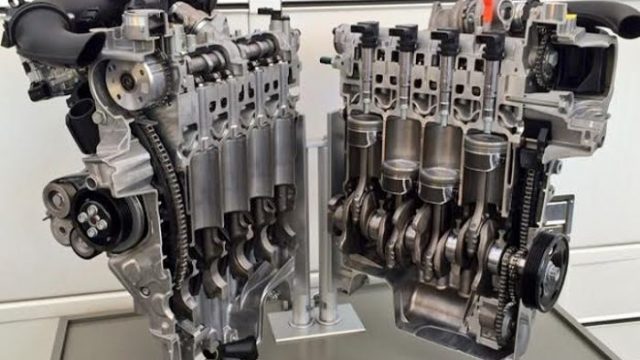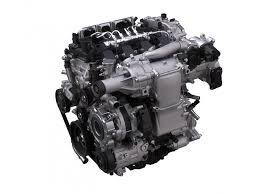
The role of internal combustion engine would be a matter of serious concern on this article. The role of An “Internal Combustion Engine” is an engine in which combustion takes place inside the engine cylinder. The fuel-air mixture is burned at high temperatures which generates a pressure force that moves the piston which in turn helps in the movement of the wheels by transferring power through some mechanism. We could also say that an internal combustion engine works on petrol as fuel in combination with air is called petrol engine. The major difference between petrol and diesel engine is how the explosion takes place. In petrol engines, air-fuel is mixed and inserted into the combustion chamber, only to be ignited by the spark plugs and producing a power stroke. Diesel engines, however, don’t have a spark plug. In such engines, the air is compressed to an extent so that its temperature surpasses the ignition temperature of the fuel. Hence the fuel is then injected after only this has been done, and it ignites spontaneously, producing a power stroke – without the use of spark plugs.
An internal combustion engine in a vehicle is to provide power to the driven wheels via the drive train. For this to be achieved efficiently, the engine needs to be served by both a lubricant system and a coolant system. The lubricant system prevents metal on metal contact between moving components (thereby reducing friction and wear), and the coolant system keeps the lubricant and component materials within acceptable service temperatures.
It is largely accepted that the combustion efficiency of a modern internal combustion (I.C.) engine is well optimized, with approximately 98% of the energy contained within the fuel being released on combustion in diesel engines and 95–98% in gasoline engines. However, the useful energy leaving the engine (termed ‘brake work’) is typically only 40% of the fuel energy. The energy that is used to provide drive to the wheels is less than the brake work, since a fraction of these needs to be used to drive ancillaries such as water pumps and the alternator. This inability to convert all the chemical energy into brake work is termed the ‘gross indicated thermal efficiency’. The overall efficiency of the engine is termed the ‘fuel conversion efficiency. Fuel Conversion Efficiency=Combustion Efficiency×Gross Indicated Thermal Efficiency
Definition of engine fuel conversion efficiency
The properties of lubricants are highly temperature dependent and, without exception, engine lubricants are designed to be at their most efficient at steady state operating temperatures which range between 100 °C and 110 °C . High lubricant viscosity at lower temperatures results in higher frictional losses, reducing the indicated thermal efficiency of the engine further.
The estimated frictional losses in the engine during the early stages of warm-up (when the engine is in the region of 20 °C) can be up to 2.5 times higher than those observed when the lubricant is fully warm. If this temperature is reduced to a cold-start scenario of 0 °C, then predicted increases in fuel consumption of up to 13.5%. Such a trend is not only critical but has a significant impact on the vehicle owner. A research carried out extensive work investigating the driving habits and trends of vehicles used in real conditions. He found that most trips made by car owners are of a short duration in terms of both time and distance. The work investigated the driving trends of 55 vehicles and characterized 1840 h of vehicle running and found approximately one third of the trips made did not enable the engine coolant to exceed 70 °C or the engine lubricant to exceed 60 °C.
During the engine warm-up phase, there are effectively three thermal masses interacting with each other, namely the main engine block, the lubricant and coolant. Of the three, the coolant is the fastest to respond owing to its temperature being closely coupled to that of the combustion gases. In contrast, the lubricant temperature and block temperature are generally much slower to respond owing to the block having a large thermal inertia and the lubricant being much less closely coupled to the combustion process. During the early phases of warm-up when the cylinder walls are cold, most of the energy from combustion is transferred to the walls owing to the high temperature differential between them and the combustion gases. With this in mind, thermodynamics indicates that insulating the combustion process from the block as much as possible (and thus increasing the gas temperature) will increase the conversion efficiency of combustion energy to mechanical brake work. Read more: Causes of Vehicle’s Stall When the Brake Is Applied
The desired increase in temperature of the lubricant during the warm-up phase results from some direct transfer of heat from the cylinder walls, but primarily results from frictional dissipation in the engine systems such as the main bearings. During the cold-start phase, a high heating rate of the lubricant to its optimum operational temperature is desirable, which in turn indicates that anything that limits the lubricant heating rate is undesirable. One route to achieve this would be the insulation of the lubricant circuit from the engine block in regions where the engine block is cooler than the lubricant. Alternatively, one could attempt to recover energy from other systems to increase the rate of lubricant warm-up. However, there is a need to ensure that any of these strategies do not prevent the lubricant being maintained at its optimal operational temperature once this has been reached (i.e. lubricant overheating must be avoided).
This work aims to review the approaches taken to improve engine cold-start performance, assess the findings and discuss the likely effectiveness of strategies based on system performance and materials optimization.







